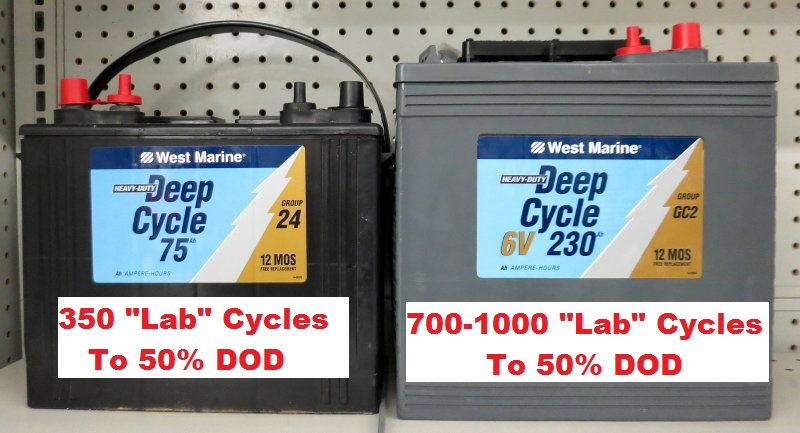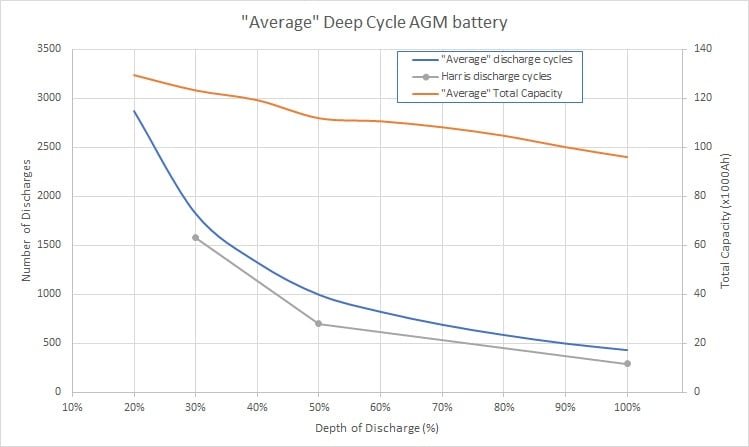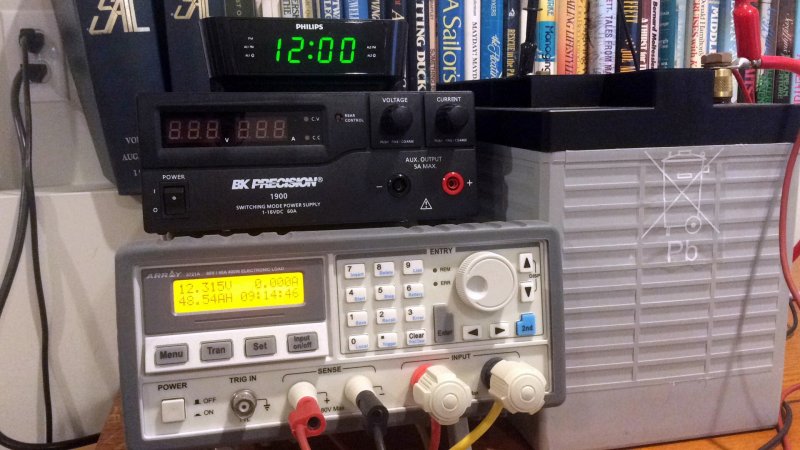Based on all the input, I'm thinking this is the type type of battery I should have asked the "yard" to install in my boat. Two of these
WEST MARINE Deep Cycle Flooded Marine Battery, 90 Amp Hours, Group 27 | West Marine
After reading their "return policy" I sent an email to see if there is any chance they would facilitate some type of return and purchase of this type of thing. In the unlikely event they offer to make the exchange, is this the battery I should suggest to them?
Then my 50w solar setup would be okay for recharging on the mooring.
Thoughts?
My first thought is there are more economical places to buy batteries than West Marine. That was actually the first thought I had when I read the first post. However, that horse is out of the barn.
Sometimes threads like this have 2 branches, the doom and gloom branch and a no shirts, no shoes, no problems branch. Sometimes reason needs to weigh in.
You have batteries which need a specific charging profile to ensure longevity. Longevity in the battery world being somewhere around 7 or 8 years. For the six months you are in a marina and connected to shore power this is not an issue. It is the six months on a mooring that is an issue.
AGM batteries do not tolerate being left in a PSOC for very long. But I don't think this is a dichotomous state, i.e., an all or nothing state. A battery left at 95% SOC won't last as long as one left at 100% SOC but it will last longer than one left at 80% SOC. The solution is to keep the batteries as charged as possible as much as possible.
In a marina with shore power, this can be accomplished by keeping the charger on whenever the boat is at the dock. Simple. On the mooring it gets a little more challenging. There are 2 avenues, try to charge as much as possible, which means a generator or lots of solar or reduce the amount of power being used. Somewhere in this mix is a sweet spot for you, energy use, charging capacity, and battery life. At one extreme, you could use lots of energy, have very little charging, and a short battery life at the other extreme you could have little or no energy use, lots of charging capacity and a long battery life. Somewhere between those extremes is where you want to end up.
In your situation, it is probably best to avoid using refrigeration unless you are on shore power, change all your lights to good quality LEDs (cheap eBay and Amazon LEDs sometimes cause more problems than they solve.), reduce power consumption in other ways, like use a self-contained blue tooth speaker instead of the stereo, make sure all your devices are charged, turn off electronics as soon as you are done, and visit a marina a couple times a summer and fully charge the battery.
I can't tell you how much time you can buy doing these things, however, if you are not an energy miser, the batteries life will be shortened.
Key to understanding what to do is having good data about battery usage. A good digital ammeter will keep you apprised of energy consumption in real time. A Balmar Smart Gauge will let you know the current SOC which will tell you how well your charging system is keeping up with consumption.
Don't despair, all is not lost. Chalk this up to a great learning experience and get out sailing.





